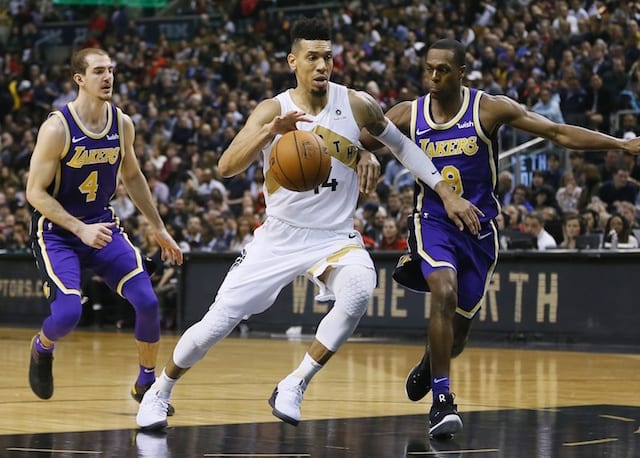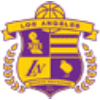2019 NBA free agency didn’t go the way the Los Angeles Lakers planned, but things may have worked out for them anyway.
It’s easy to forget now that we live in a world where LeBron James and Anthony Davis are teammates and that trading Lonzo Ball, Brandon Ingram, Josh Hart, and a plethora of draft picks wasn’t exactly Plan A for the Lakers.
The initial goal was to use their cap space to sign a second All-Star player for James, which wouldn’t have required the Lakers to sacrifice most of their young core. When Davis hit the market, the plan evolved to doing everything they could to land him, then using the lure of the James/Davis combo to convince Kawhi Leonard to leave the Toronto Raptors and form what would arguably be the most talented Big 3 ever assembled.
Once Leonard made the decision to jump to the Los Angeles Clippers to play with Paul George, the Lakers — despite being shocked and disappointed — were ready.
Leonard’s decision was a head-scratcher. The Lakers offering a potential dynasty to him should have been the easy choice, but Los Angeles didn’t leave anything to chance and got right to work spending their $32 million in cap space.
Danny Green had been holding off on making his own free agent decision, waiting for the Leonard domino to drop. As soon as Leonard chose a team that wasn’t the Lakers, Green immediately posted a video on the “Inside The Green Room” Twitter account announcing that he was accepting a two-year deal from the Lakers.
Clearly, the Lakers had Green in their back pocket as a contingency in case Leonard went elsewhere — even as the Dallas Mavericks pushed him to make a decision sooner rather than later. Green saw the Mavericks as being a few years away from contention and thus preferred taking the Lakers’ offer assuming that Leonard didn’t sign there and eat up all of their cap space.
While the two-year, $30 million deal may seem like a lot for a player who only scored 10.3 points per game during the 2018-19 NBA season, Green is an analytics darling whose combination of high-level defense and floor spacing caused him to be the top shooting guard in the league in ESPN’s Real Plus-Minus. For a Lakers team that needs defense and shooting alongside James and Davis, they simply had to have Green if Leonard spurned them, and the Lakers navigated the situation perfectly.
The Lakers weren’t done there bringing back JaVale McGee, who had instant chemistry with James last season. On average, nearly half of James assists last season went to either Kyle Kuzma or McGee and the Lakers managed to retain both. McGee’s deal is for two-years, $8 million with a player option on the second year, which is below market value for a center of his caliber.
Kentavious Caldwell-Pope was also brought back on a two-year, $16 million deal, which wasn’t a bargain but falls in line with what contemporaries like Seth Curry and Rodney Hood received. Per Synergy, Caldwell-Pope rated in the 81st percentile as a spot-up shooter and should see more of those opportunities than ever before with James and Davis drawing so much attention.
Quinn Cook, who shot 42% from the three-point line last season for the Golden State Warriors, was brought in on a two-year, $6 million deal and Rajon Rondo also returned on a two-year, minimum deal. The point guard rotation was rounded out with Alex Caruso, a feel-good story who went undrafted and worked his way up through the G-League for three years until he ultimately earned a spot on the team’s roster. If the much-improved shooting that Caruso displayed (unsustainable 48% from the three-point line) continues next season, he could push both Cook and Rondo for minutes.
While all of these moves had their own merit, the real bombshell came when it was announced that the Lakers had landed DeMarcus Cousins for a shockingly-low one-year, $3.5 million deal. Prior to a torn Achilles suffered during the 2017-2018 season with the New Orleans Pelicans, Cousins was one of the top big men in the league and a shoo-in for a max deal. He dealt with a quad injury that knocked him out for much of the 2019 NBA playoffs for the Warriors but if healthy, the trio of Davis, Cousins, and McGee should give them an advantage in the paint over most clubs.
The team abandoned their Plan A when Davis hit the market and Plan B was kaput when Leonard decided that a potential dynasty wasn’t his style. It was unquestionably a blow to the their mythos as All-Star players are supposed to flock to Los Angeles like the salmon of Capistrano.
Still, we have to recognize the team’s relative success. After months of negative press that characterized them as a swamp of nepotism-fueled incompetence, they managed to successfully pivot from missing on Leonard –which could have been a mortal wound — and found a way to still build a team that on paper should be a contender.
The Lakers have deserved plenty of the criticism lobbed at them for their self-inflicted wounds and dysfunction, but credit should also be given where it’s due.





